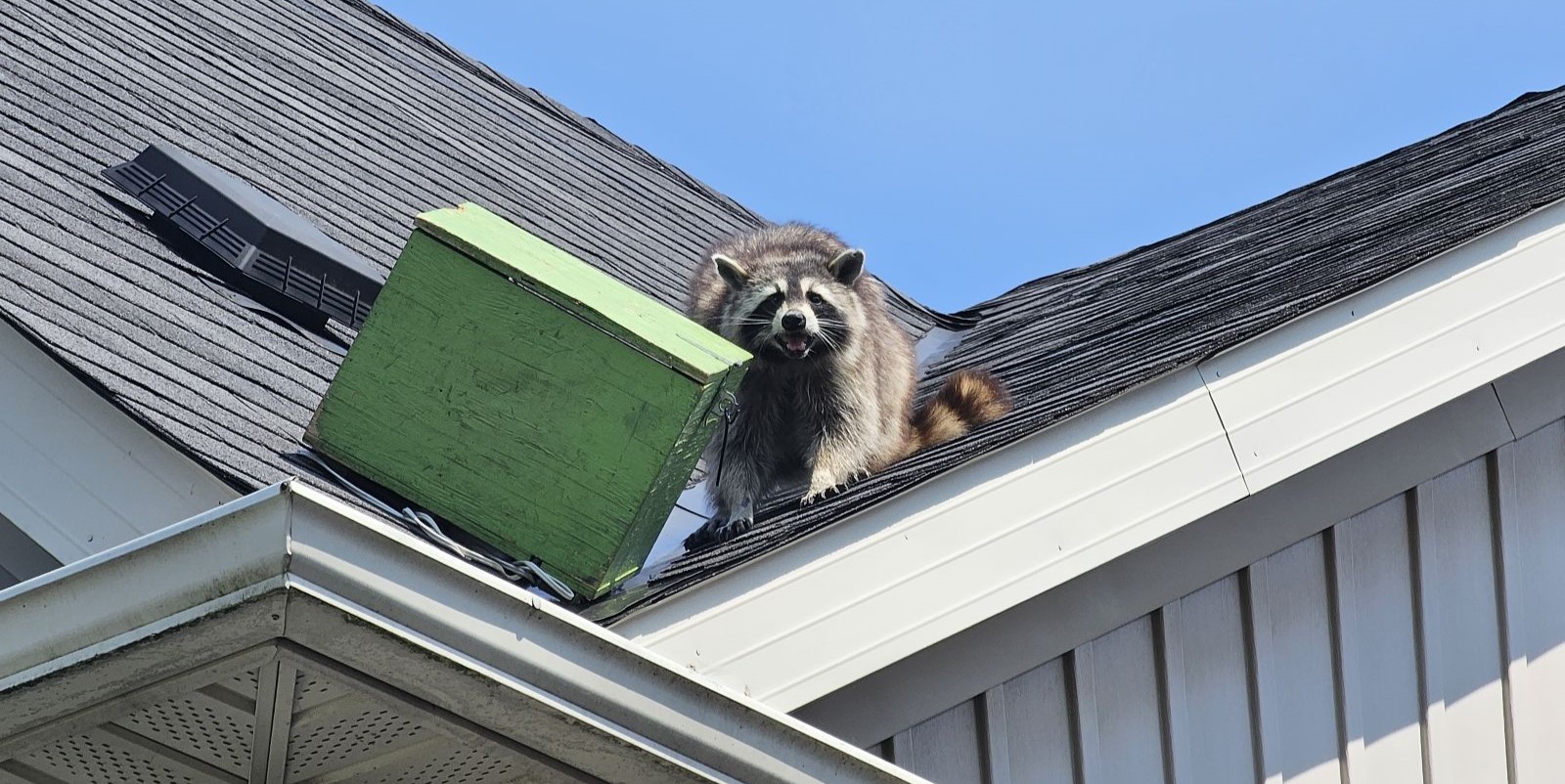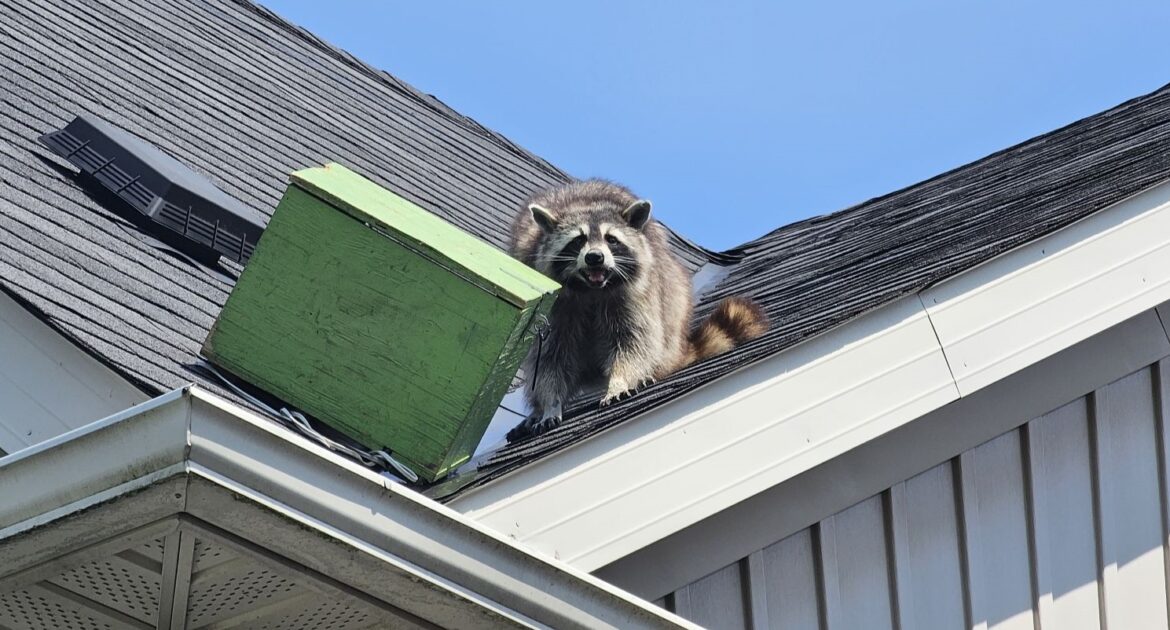Beneath the veil of Toronto’s bustling urban landscape, a surprising array of wildlife maneuvers the concrete jungle with remarkable adaptability. Among them, the raccoon reigns supreme in urban survival, often inciting mixed feelings of fascination and exasperation among residents. Our deeper understanding of raccoon behaviour is about satiating curiosity and coexisting respectfully with these nocturnal bandits.
This article unveils facts about raccoon that shed light on their intriguing nocturnal activities, with insights into why methods to scare away raccoons at night involve more than just a random clamouring of pots and pans. Each fact peels back a layer of mystery surrounding these creatures and reveals the complex behaviours that enable them to thrive amid city life. Professional and conscious wildlife removal services play an essential role in maintaining the delicate balance between human convenience and the inherent wildness that sneaks through our alleyways under the cover of darkness.
Fact 1: The Urban Ranger – Raccoons are Born Survivors
Toronto didn’t become the raccoon capital of the world by chance; it’s a testament to the adaptability of these animals. Raccoons have a surprisingly vast ‘home range,’ territories often requiring multiple houses and urban blocks to traverse. They can remember streets, paths, and even specific houses, displaying remarkable navigational skills. But this doesn’t mean they’re just night-time prowlers.
Raccoons are primarily nocturnal but have been observed engaging in their shenanigans during daylight. This adaptability serves them well in Toronto’s busy, 24/7 environment—proving that the city lights never blind the raccoon.
Fact 2: The Matriarchal Masterminds – Raccoons’ Social Structures
Don’t be fooled by the ‘lone ranger’ image; raccoons are pretty cozy when it comes to community living. Their social structure is similar to a pack, with a lead female directing operations. She’ll have a closely-knit group of related females and their kits, which will also include the current season’s litter and those from previous years. Males, on the other hand, are more solitary and typically just move from community to community looking for opportunities to eat, mate, and establish their territory.
Fact 3: Highly Omnivorous Eaters
Raccoons are the original foodies of the wild. Their diet isn’t undersold; it’s wide and diverse. They are omnivores and can eat just about anything. Skedaddle’s wildlife experts often find raccoons making home in attics or under decks, partly because it’s near a food source. Raccoons have a preference for protein-rich foods, like insects and small mammals, but they’re also fond of produce, nuts, and even garbage. Unfortunately, garbage offers a high caloric intake without much energy expenditure, making it one of their top choices.
Fact 4: Raccoons and Intelligence
If a spacecraft landed in your backyard and a raccoon emerged, you wouldn’t be far-fetched to think it was the captain. Raccoons’ problem-solving skills and intelligence are second to none in the animal kingdom. They can remember solutions to tasks for up to three years once solved. This level of intelligence combined with their nimble hands makes them formidable opponents—especially when they set their sights on your trash.
Fact 5: The Home in Your Home – Raccoon Dens and Habitation
Raccoons aren’t picky about their cribs. In urban areas, they’ll make dens in chimneys, attics, under decking, and even in garages. Raccoon dens are constructed from any available material; they prefer using their sensitive hands to create something that resembles a bed, rather than simply lying on the ground. This adaptability is why you might find them in unusual places when you least expect it, and why it’s crucial to secure your home against these potential intruders.
Fact 6: The Language of the Raccoon – Vocalizations and Body Language
Like most animals, raccoons use a combination of vocalizations and body language to communicate. They’re not overly vocal, but they do have a range of sounds, mainly consisting of chittering, growls, hissing, and snarling. They use these to convey different messages, from aggression to fear. The more you can understand their language, the better you’ll be able to respond appropriately when you encounter them.
Fact 7: Raccoon Reproduction and Lifecycle
Raccoons don’t take the idea of expanding the family lightly. Mating season, which peaks in January and February, is a raucous event marked by loud vocalizations and a lot of movement by the males between various female groups. Gestation lasts about 63 days, and litters typically range from two to five kits. The mothers are highly protective and will move their babies to a new den, one at a time, paying no heed to humans or their structures in the way.
Skedaddle: Experts in Raccoon Behaviour and Removal
As the premier choice for wildlife management, Skedaddle is the solution to your raccoon woes. Imagine a service that merges cutting-edge technology with the heart of a conservationist, providing humane solutions for both the homeowners and the animals we service. With over three decades of expertise, Skedaddle is the linchpin in Toronto’s urban ecosystem, ensuring the effective management and removal of wildlife.
Our success stories don’t lie; testimonials from homeowners across the Greater Toronto Area bear witness to our commitment to excellence. Our standout approach isn’t just about evicting the raccoon from your premises; it’s about understanding their behaviour and providing long-term solutions. With Skedaddle, you’re not just another customer; you’re a homeowner we’re dedicated to serving with unwavering quality and integrity in wildlife management.
In our mission to humanely manage urban wildlife, we prioritize education and prevention as key strategies. Our team of skilled professionals provides comprehensive inspections to identify potential entry points and vulnerabilities in your home or business. This proactive approach not only addresses the immediate concern but also implements preventive measures to deter future wildlife intrusions. By sealing entry points, advising on habitat modifications, and providing guidance on coexisting with urban wildlife, Skedaddle ensures a harmonious balance between the natural world and our urban communities.
Encountering Toronto’s Nightlife
The next time you’re awakened by a commotion in your backyard or a masked face poking around your bins, pause to consider these remarkable creatures. Raccoons have forged a place for themselves in the concrete jungle, adapting and thriving in the face of an urban sprawl that could leave other species floundering. Now equipped with these facts about raccoon behaviour, and the assurance that Skedaddle is by your side, you can appreciate the marvels of coexistence.
It’s a delicate dance, sharing our space with the creatures who were here first. But by understanding their behaviour, choosing the right partners in wildlife management, and staying informed, we can ensure that the Toronto we know and love remains a sanctuary for both humans and wildlife.
The Raccoon Removal Challenge Awaits
Are you ready to take the next step towards a harmonious cohabitation with Toronto’s urban wildlife? Contact Skedaddle today to kickstart your wildlife management journey and say goodbye to raccoon woes. Our professional team is on standby, prepared to deploy our custom-tailored solutions to safeguard your home against any wildlife intrusion. Don’t face this challenge alone; Skedaddle is here to help you protect your home and the wildlife that makes Toronto so vibrant.




